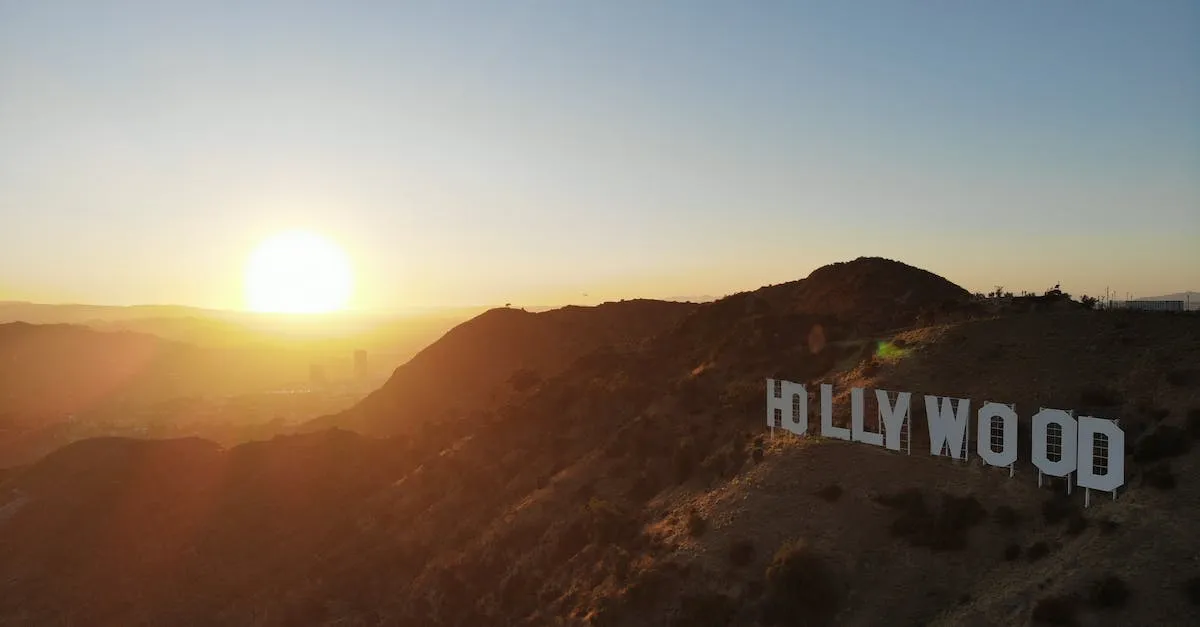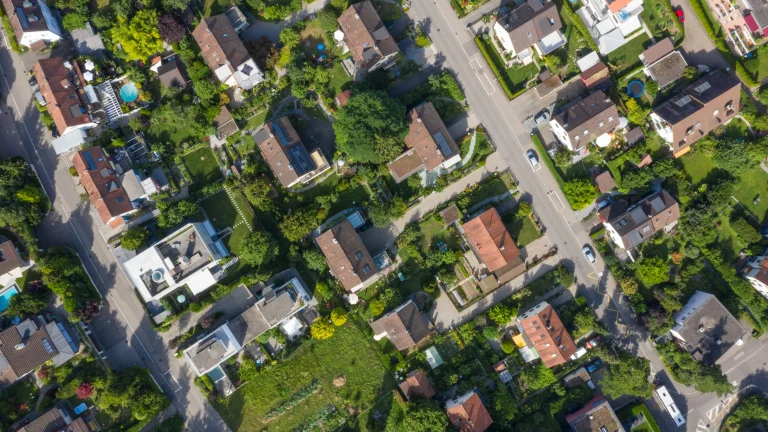Is Los Angeles A Desert? An In-Depth Look
With its palm trees, beaches, and Hollywood glitz, Los Angeles brings to mind images of a lush, green oasis rather than a barren desert landscape. But the term “desert” has a specific scientific definition based on rainfall patterns, not stereotypes. So does Los Angeles actually qualify as a desert region? The answer is more complex than you might think.
In short: While LA does fall under the broad definition of a desert due to its low annual rainfall, it has a Mediterranean climate that sets it apart from the hot, dry desert stereotype. Its geography and proximity to the ocean give LA mild temperatures and moderate humidity that allow greenery to thrive in certain areas.
Defining the Term ‘Desert’
When we think of deserts, the first image that comes to mind is usually a vast expanse of dry, barren land with scorching temperatures. But what exactly defines a desert? Contrary to popular belief, deserts are not solely characterized by high temperatures.
Instead, the term “desert” is primarily determined by the amount of rainfall received in a particular region.
Deserts are regions that receive minimal rainfall per year
Deserts are typically defined as regions that receive less than 10 inches (25 centimeters) of rainfall per year. This limited amount of precipitation contributes to the arid conditions we associate with deserts.
Los Angeles, with its average annual rainfall of around 15 inches (38 centimeters), may not meet the strict criteria of a desert. However, it does experience some desert-like qualities due to its semiarid climate.
Deserts are not solely determined by the amount of rainfall but also by factors such as evaporation rates, soil moisture levels, and overall aridity. While Los Angeles may not fit the textbook definition of a desert, it does exhibit characteristics that overlap with desert ecosystems.
Low precipitation leads to lack of vegetation in many deserts
One of the defining features of deserts is the scarcity of vegetation. Due to the limited rainfall, plants struggle to survive in these arid environments. Many deserts are home to specialized plant species that have adapted to survive in the harsh conditions, such as cacti and succulents.
However, in areas with slightly higher rainfall, like Los Angeles, vegetation is more abundant than in typical desert regions.
In Los Angeles, you can find a variety of plant life, including native chaparral shrubs and coastal sage scrub. These plants have adapted to the Mediterranean-type climate, which is characterized by hot, dry summers and mild, wet winters.
While the vegetation may not be as lush as in other regions, it still thrives in its own unique way.
But some deserts have enough groundwater to support plant and animal life
While deserts are often associated with barren landscapes, there are exceptions. Some deserts, known as “oases,” have enough groundwater reserves to support plant and animal life. These oases are usually formed by underground aquifers that provide a source of water for vegetation and create lush habitats in the midst of arid surroundings.
Los Angeles, situated in the Mojave Desert, benefits from underground water sources that sustain its diverse flora and fauna. The city’s water supply relies heavily on the Colorado River and groundwater extraction.
These resources enable the growth of urban landscapes and support a range of plant and animal species.
Los Angeles Climate and Geography
Los Angeles, famously known as the “City of Angels,” is located in Southern California and is known for its beautiful weather and diverse geography. The city’s climate can be best described as a Mediterranean climate, characterized by wet winters and dry summers.
LA has a Mediterranean climate with wet winters and dry summers
Los Angeles experiences mild, wet winters and hot, dry summers. The average temperature in the winter months ranges from 65°F (18°C) during the day to 48°F (9°C) at night. In contrast, summer temperatures can soar up to 90°F (32°C) during the day and rarely drop below 70°F (21°C) at night.
This climate is ideal for outdoor activities and has contributed to the city’s famous beach culture.
Annual rainfall averages 15 inches, meeting the criteria for a desert
Despite its Mediterranean climate, Los Angeles receives relatively low annual rainfall. On average, the city receives around 15 inches (38 cm) of rainfall per year. This amount of rainfall meets the criteria for a desert, which is defined as an area that receives less than 10 inches (25 cm) of rainfall annually.
However, Los Angeles does not have the typical arid desert landscape that we often associate with desert regions.
But the city’s proximity to the Pacific Ocean moderates temperatures
One of the factors that sets Los Angeles apart from other desert regions is its proximity to the Pacific Ocean. The cool ocean currents help moderate the city’s temperatures, preventing extreme heat waves in the summer and keeping temperatures relatively mild in the winter.
This moderating effect is known as the marine layer, a phenomenon where cool air from the ocean moves inland, creating a layer of fog and mist along the coast.
How LA Sustains Plant Life
Los Angeles may be known for its warm and sunny weather, but it is not without its challenges when it comes to sustaining plant life. However, through careful irrigation practices, the city has managed to create and maintain green spaces that are a hallmark of its landscape.
Careful irrigation allows greenery like palm trees to thrive
One of the key ways that Los Angeles sustains plant life is through careful irrigation. Despite being located in a semi-arid region, the city has managed to create a lush environment with iconic palm trees lining its streets.
These trees are able to thrive in the dry climate thanks to a combination of regular watering and strategic placement. The city’s Department of Water and Power has implemented measures to ensure that water is used efficiently, with a focus on delivering the right amount of water to plants while minimizing waste.
This has allowed the palm trees, and other greenery, to flourish and contribute to the city’s unique aesthetic.
Grassy parks use recycled water to stay green
In addition to careful irrigation practices, Los Angeles has also implemented innovative solutions to sustain plant life in its parks and public spaces. Many of the city’s grassy parks use recycled water to stay green.
This not only helps to conserve water but also reduces the strain on the city’s water supply. The use of recycled water ensures that these green spaces can be enjoyed by residents and visitors alike, even during times of drought or water restrictions.
It is a testament to the city’s commitment to sustainability and preserving its natural beauty.
Some native plants are adapted to withstand arid conditions
While careful irrigation and the use of recycled water play a crucial role in sustaining plant life in Los Angeles, it is worth noting that some native plants are naturally adapted to withstand arid conditions.
These plants have evolved over time to be drought-tolerant and require less water to thrive. Examples include the California poppy, desert marigold, and coastal sagebrush. By incorporating these native plants into landscaping projects, the city is able to reduce water consumption and create sustainable green spaces that are in harmony with the local environment.
Nearby Desert Regions vs. LA
When comparing nearby desert regions like Death Valley and Mojave Desert to Los Angeles, it becomes evident that the climates and ecosystems are vastly different.
Places like Death Valley and Mojave Desert are much hotter and drier than LA
Death Valley and Mojave Desert are known for their extreme heat and arid conditions. In fact, Death Valley holds the record for the highest temperature ever recorded on Earth, reaching a scorching 134 degrees Fahrenheit (56.7 degrees Celsius).
These desert regions receive very little rainfall, making them some of the driest places on the planet. In contrast, Los Angeles has a Mediterranean climate characterized by mild, wet winters and warm, dry summers.
They have extreme temperatures and sparse vegetation
The extreme temperatures in Death Valley and Mojave Desert create a harsh environment that is not suitable for most forms of life. Vegetation in these desert regions is sparse, consisting mainly of resilient plants adapted to the arid conditions.
The lack of water and extreme heat make it challenging for plants and animals to survive in these desert regions. On the other hand, Los Angeles is home to a variety of plant and animal species, thanks to its more moderate climate and proximity to the ocean.
LA has more in common ecologically with coastal Mediterranean areas
Despite being located in Southern California, Los Angeles has more in common ecologically with coastal Mediterranean areas than nearby desert regions. The coastal Mediterranean climate in Los Angeles is characterized by mild, wet winters and warm, dry summers, similar to regions like the Mediterranean Basin.
This climate supports a diverse range of plant and animal species, including iconic coastal vegetation such as palm trees and chaparral. The proximity to the ocean also influences the climate in Los Angeles, keeping temperatures cooler and more moderate compared to the scorching heat of nearby desert regions.
Conclusion
While Los Angeles does technically meet the criteria for a desert based on its low rainfall, its climate is moderated by the Pacific Ocean which allows greenery to flourish with the help of irrigation. So while LA shares some desert characteristics, its Mediterranean environment sets it apart from the stark, barren desert stereotype.








